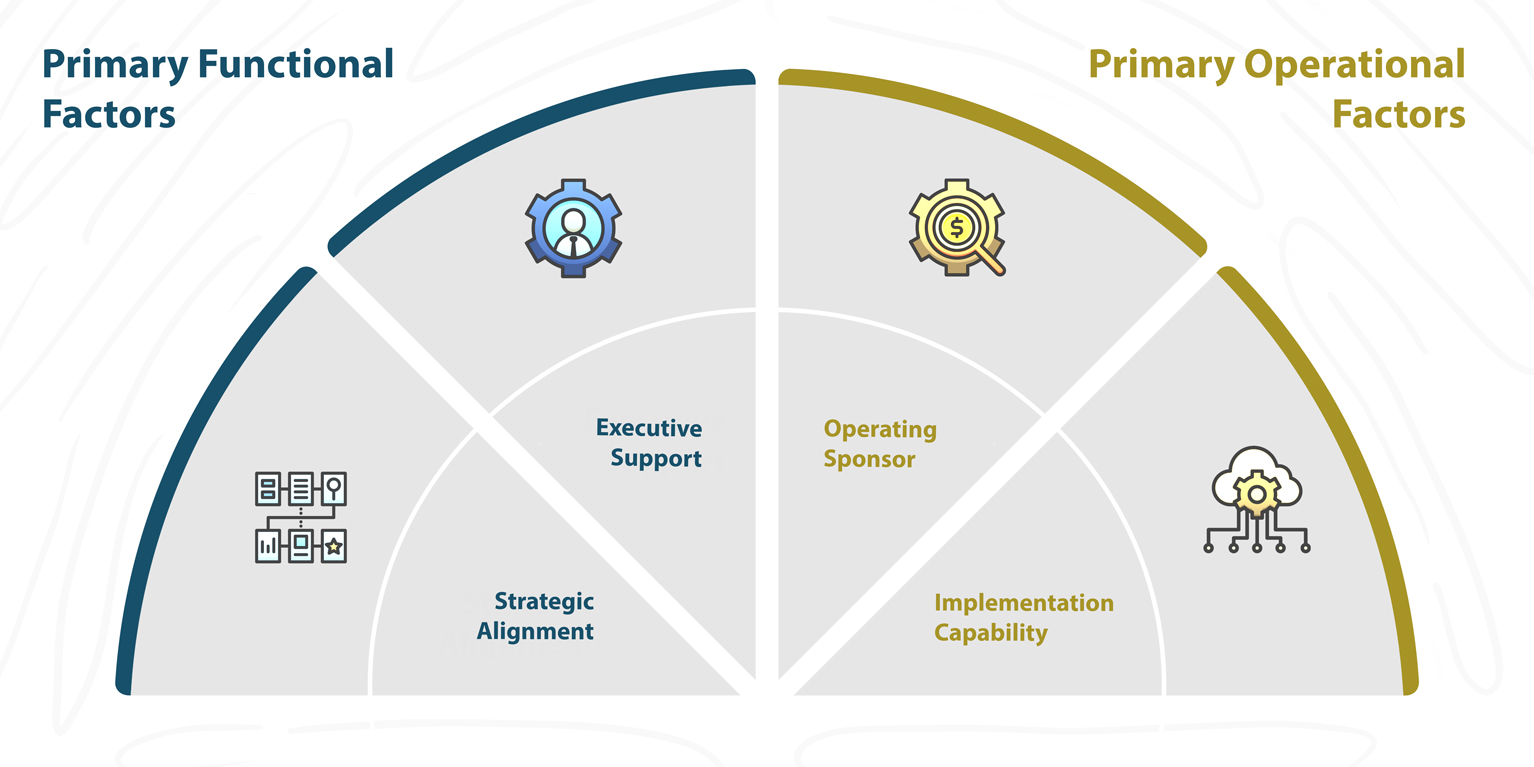4 Primary Factors that Drive Successful Strategic Execution Projects
There are many factors that lead to the delivery of a successful transformational project, and it really does not matter what the technology is. The purpose of this article is to focus on what makes a successful implementation of a strategic performance management system. Based on our experience, it is a consolidated list of just those key ingredients that are particularly critical to delivering success.
The four key factors
In a 2001 study conducted by the University of Hong Kong, researchers found that there were 10 critical success factors required to achieve a successful implementation. We have adapted those findings and developed a StrategyBlocks framework to achieve maximum project success. Factors can be organized into functional and operational categories, and those that are primary and secondary factors. The more factors considered, of course, means there is a greater opportunity for success. However, researchers found that organizations can often achieve a successful result by only just managing the 4 primary factors:
- Gaining executive commitment
- Alignment to strategic business objectives
- Gaining an operating sponsor
- Ensuring availability of implementation resources
Before we look at each, the research also shows that project success is more likely when an organization starts with a clear definition of business goals, determines supporting needs for information and then (and only then) considers the system. So many failed projects start with a reversed list: system platform selection, information availability and finally an attempt to find business benefits. It is therefore important that function leads operation.
Primary functional factor: Executive support
A specific Executive Sponsor(s) who can recognize the need for strategic execution management must be identified. It will be someone who is sufficiently committed to the system by investing their time and effort in guiding its use. Executives must be seen to value the information delivered, and this person is a key advocate.
Primary functional factor: strategic alignment
A core premise of StrategyBlocks is to drive strategic alignment. The project must include the exercise of modelling strategy that is correct and reflects the vision of the organization, and that the strategy itself is focused on the true business goal, to create long-run customer/stakeholder value.
Primary operational factor: Operating Sponsor
In addition to the Executive Sponsor, an Operating Sponsor must also be identified. This individual must be well acquainted with the Executive Sponsor’s way of working. They will be the ‘user champion’ — a recognized power user of the system by their peers and have significant functional platform knowledge.
Primary operational factor: implementation capability
A technical representative (internal or external) is also beneficial to support integration to source data systems. When the system is supported by trusted data, it builds confidence amongst the user community and rapidly delivers business value. It rapidly becomes part of the performance management fabric of the business.
Driving ultimate project success
When a project is implemented correctly following these key factors the system will almost inevitably produce demand by executives, peers and teams, developing a potentially viral solution expansion. It should not be seen as a mandated system of command and control, but instead foster communication, collaboration, and corporate transparency. It therefore becomes an inclusive method of sharing vision and visually showing the importance of an individual’s contribution and their key role in the organization’s strategy. If it creates true value internally, it will generate real value externally.




A simple project management software is typically designed to get you started with your team’s tasks right away, usually with an easy-to-use and straightforward interface that enables teams to adopt them quickly.